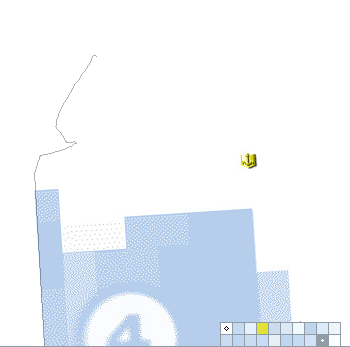Contemporary graphic designers are called on to manage and present data and information in compelling and functional ways across an array of media—not deal in the birth of perfected and mod geometries to be gawked at and/or corporately acquired. Things have changed no matter how much we may want to deny it.
However, we do study form. We ask questions of shapes and contexts and relevance. We learn about light and shadow, materiality and its interface. We ask questions of what is needed and what is valued. We ask about the preferred and search our values to understand ourselves and the time we live. More than ever, we study the contexts in which any form may reside and any material used.
So what is the value of our formal studies unless married to an array of critical contexts in which we may find purpose? Where are the conjunctions that allow for one to learn synthesis and work toward a personal understanding? No matter how in-depth a tactile, direct and aesthetically engrossing study of form may be, one must deal in context. Why are we doing this? Why are we learning this? I have talked about some basic ways to define what you are doing: applied and experimental modes/intent, divergent and convergent thought/process, and listed an array of anthropological lenses (what?).
Identifying a range of considerations in context allows us to structure our studies and reflect on the outcomes with some purpose and criticality. I will always ask you about process. How did you get here and now that you have arrived at these ideas/solutions, what is your next step? If you have studied 2D or 3D or 4D language/form, made something, assessed its most basic material properties and learned from molding the metaphorical clay, what is next? What did you learn and do you know why you did what you just designed? I will always seek a transparent process with as great a number of contextual considerations as possible. The first is you. Have you synthesized an understanding of form/content and context and told a story that you value? What values and considerations?
Take a basic 3D shape in space and ask some questions of it. What questions will you ask of yourself, an audience, and the time in which you are making it. What of suspended inert monoliths in public spaces? What of the study of extruded typography in virtual spaces? How applied, how experimental, and to what purpose?
I have asked a few questions, but to break this open a bit, what happens when you consider the technological possibilities of Bot and Dolly? * Just how much does a seemingly isolated and experimental study of virtual 3D typography shift to the applied when one considers these systems and the ways designers may use them in the future? What becomes of ‘perfected’ geometric shapes in space when the surfaces come alive?
The institutionalized public sculpture of the last century that sat out on the landscape in isolation has been absorbed by architecture, interior architecture, and landscape architecture of the present. Buildings and their surfaces have absorbed those forms and functions. Surfaces are now mutable and have expanded the study of graphic design and other disciplines.
To shift just a bit, let’s consider trans- or multi- media design. Graphic designers rarely find a solitary life of poster design or even the old mainstay of print design. If a graphic designer works in print or branding, they are frequently (always) working across media in interaction design or motion design. This is old news as we were doing this well over a decade ago. In current graphic design practice we cannot edit anymore on personal preference. The discipline and the array of professional, technological, and social contexts define this—we do not. We can define our career path, yes—and to this there is a demand that you define more of your studies earlier and with greater awareness of what is possible.
–––––––––––––
* This is not just new tech pushing redundant questions and considerations inherent in old tech or no tech, nor is it a relentless continuation of a to-do list. It may prove in time to be a theoretical and philosophical romper room of spectacle and virtual dead-ends, but I doubt the metaphors and questions will go to waste. The digi systems designers have dealt with over the last two decades have pointed back out of the box and allowed some to see non-digi systems and their place in them anew.

